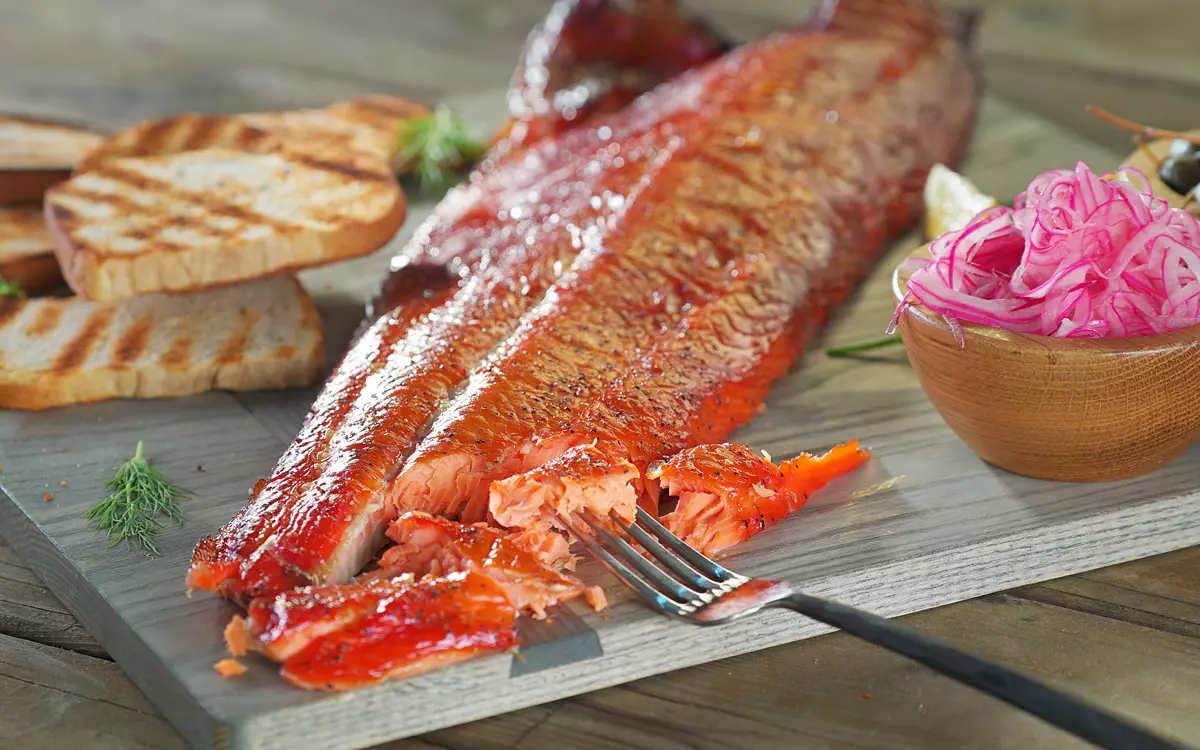When it comes to smoking salmon, achieving the perfect cure is essential. The cure not only adds flavor but also helps preserve the fish. One of the critical factors in achieving a well-cured smoked salmon is the cure ratio. In this article, we will explore what the cure ratio is and how to determine when the salmon is fully cured.
What is the Smoked Salmon Cure Ratio?
The cure ratio refers to the amount of curing mixture used in relation to the weight of the salmon. It is essential to use the correct ratio to ensure the salmon is adequately cured. Using too little or too much curing mixture can result in an uneven cure or overly salty salmon.
Typically, the cure ratio for salmon is around 3-5% of the salmon's weight. This means that for every 100 grams of salmon, you would use 3-5 grams of curing mixture. However, it is important to note that the cure ratio can vary depending on personal preference and the specific recipe being used.
How to Determine When Salmon is Fully Cured
Knowing when the salmon is fully cured is crucial to achieve the desired flavor and texture. Here are a few indicators to help you determine when your smoked salmon is ready:
Time
The curing process takes time, and it is important not to rush it. Depending on the size and thickness of the salmon fillets, it can take anywhere from 24 to 48 hours for the cure to penetrate the fish completely. It is recommended to cure the salmon in the refrigerator and allow enough time for the flavors to develop.
Texture
When the salmon is fully cured, it should have a firm texture. You can check this by gently pressing the flesh with your finger. If it feels firm and slightly springy, it is a good indication that the cure has been successful.
Color
Another visual indicator of a fully cured salmon is the color. The cured salmon should have a vibrant pink or orange color, depending on the species. If the salmon still appears pale or grayish, it may need more time in the curing mixture.
Saltiness
While some saltiness is expected in cured salmon, it should not be overpowering. To test the saltiness, you can take a small piece of the cured salmon and taste it. If it tastes too salty, you can rinse it under cold water to remove excess salt before smoking.

- Can I adjust the cure ratio?
- Can I reuse the curing mixture?
- What other ingredients can be added to the curing mixture?
- Can I cure other types of fish using the same ratio?
Yes, the cure ratio can be adjusted according to personal preference. If you prefer a milder or saltier flavor, you can increase or decrease the amount of curing mixture used.
No, it is not recommended to reuse the curing mixture. Once it has been used, it may contain bacteria from the raw fish. It is best to discard any leftover curing mixture.
Various additional ingredients can be added to the curing mixture to enhance the flavor. Some popular options include herbs, spices, citrus zest, or even a touch of maple syrup. Experiment with different combinations to find your favorite flavor profile.
The cure ratio can be used as a general guideline for curing other types of fish, but it may need to be adjusted depending on the fish's thickness and texture. It is always best to refer to specific recipes or consult a smoking expert for guidance.
In conclusion, achieving the perfect cure ratio is crucial for smoking salmon. By following the recommended cure ratio and paying attention to the indicators of a fully cured salmon, you can enjoy delicious and flavorful smoked salmon every time. Happy smoking!
If you want to know other articles similar to Perfectly cured smoked salmon: achieving the ideal cure ratio you can visit the Smoking techniques category.


Related Articles